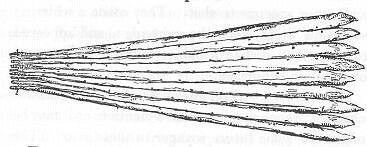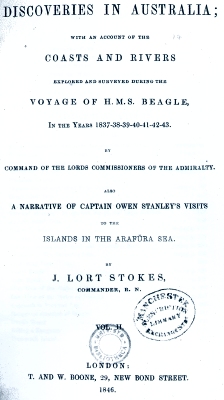CHAPTER 1.12.
[At Timor]
CANOES.
Their canoes, about thirty of
which were hauled upon the beach, were from twenty-five to
thirty feet long, and very narrow, with outriggers
projecting ten or twelve feet from each side, and supporting
a piece of buoyant wood to give stability.
They carried one large mat-sail, but did not appear to sail
fast.
As soon as we had satisfied our
curiosity on the beach, old Lomba led the way to the village
on the crest of the hill.
The ascent commenced close to the landing place by a flight
of steps rudely formed by logs of wood laid across a narrow
path cut in the hillside, which brought us to within forty
or fifty feet of the summit.
After which we had to climb two ladders, made of hard red
wood richly carved, placed almost perpendicularly against
the cliff.
In a recess under the upper step we noticed four small idols
that bore a strong resemblance to those of the South Sea
islanders.
BOAT-BUILDING AT KI ILLI.
We had also an opportunity of
seeing the boats, which are built in great numbers from the
excellent timber with which all the islands of this group
abound.
They are much used by the traders frequenting the Arru
Islands, and were highly spoken of for their durability and
speed.
The boats we saw, though they varied considerably in size,
were all built on the same plan, having a considerable beam,
a clean entrance and run, a flat floor, and the stem and
stern post projecting considerably above the gunwales.
They were all built of planks cut out of solid timber to the
form required, dowelled together by wooden pegs, as a cooper
fastens the head of a cask, and the whole afterwards
strengthened by timbers, lashed with split rattan to solid
cleats left for the purpose in each plank, during the
process of hewing it into shape.
Four of the smallest of these
boats were purchased for the use of the colony, for about 2
1/2 dollars each, and were found to answer very well.




